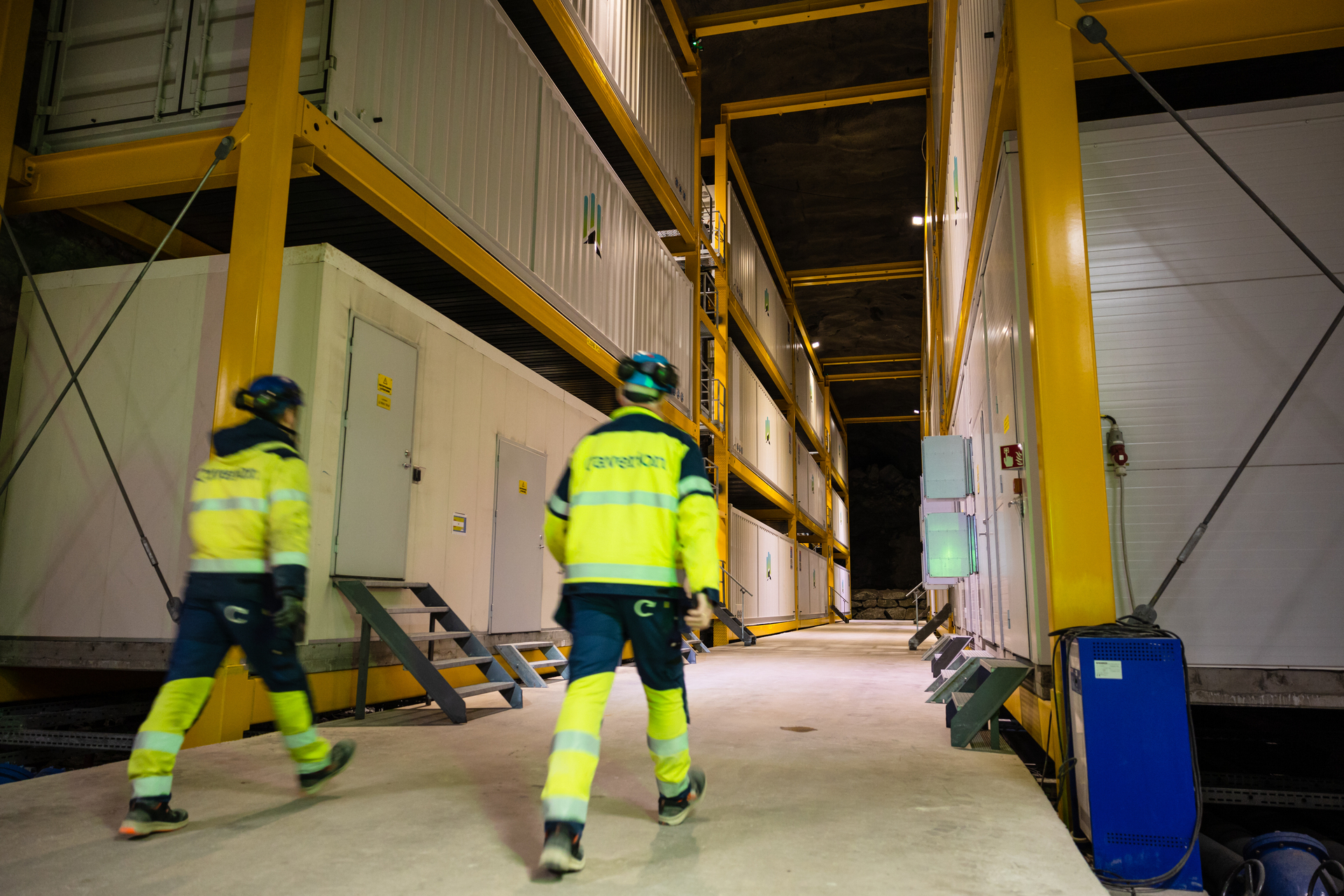Norway has long been regarded as a country where working life, social equality and public health are deeply interconnected. The so-called Norwegian working life model, grounded in close cooperation between employers, employees and the state, has delivered high levels of job satisfaction, relatively low inequality, and one of the healthiest populations in Europe.
Yet globalisation, digitalisation and the growth of atypical employment are now testing the resilience of this model. Experts argue that Norway’s OCCUPATIONAL HEALTH SERVICES (BEDRIFTSHELSETJENESTE – BHT) must play a stronger role in safeguarding not only the health of individual workers but also the broader social contract.
A model built on cooperation and trust
At the core of Norway’s approach is the Working Environment Act, which requires most enterprises to maintain high standards of workplace health, safety and inclusion. Many businesses are legally obliged to engage BHT, a system of occupational health services that provides risk assessments, ergonomic guidance, psychosocial support and training.
Read Also: HOW NORWAY’S OCCUPATIONAL HEALTH SERVICES (BHT) GAIN STRONGER ROLE IN HSE SYSTEM
BHT operates within a wider framework of tripartite cooperation, where the state, employers’ associations and trade unions collectively shape labour policy.
This model has produced:
Moderate wage differences through centralised wage bargaining and solidaristic pay policies.
High levels of trust, both between employees and employers and in institutions.
Job security, consistently ranked among the strongest in Europe.
Worker autonomy, with employees enjoying significant influence over their tasks, schedules and training opportunities.
Norwegian workers consistently report higher job satisfaction than their European counterparts. Despite relatively high sickness absence, surveys show that employees demonstrate strong mental health and high levels of commitment to their jobs.
Read Also: SAFETYWING – THE BEST INTERNATIONAL TRAVEL INSURANCE FOR DIGITAL NOMADS
Health outcomes and international comparisons
According to research from Statistics Norway and the FAFO INSTITUTE FOR LABOUR AND SOCIAL RESEARCH , employees in Norway report better mental health and stronger work commitment than most of their European peers. Analysts highlight three key elements behind these outcomes:
Collective bargaining structures, which ensure predictable wage growth and reduce disparities.
Egalitarian wage policies, which lift the lowest incomes while moderating top salaries.
Inclusive working environments, mandated by the WORKING ENVIRONMENT ACT , which enshrine participation, equality and safety.
In European surveys, Norwegian employees stand out for their sense of job security, decision-making autonomy, and social support from managers and colleagues. These factors strongly correlate with lower stress levels and improved well-being. Public health outcomes are typically strongest in societies with minor social differences and high levels of trust — two features that remain central to Norway’s labour market.
Pressures from globalisation and migration
THE FOUGNER COMMITTEE , tasked with evaluating the future of working life, warns that increasing globalisation and migration are reshaping the Norwegian labour market.
Over the past two decades, migrant workers have become essential in construction, health care, hospitality and agriculture. While filling key gaps, this has also brought challenges. Some low-educated Norwegian workers have been pushed out of the labour market, and cases of social dumping — where foreign employees are paid less or given poorer conditions — remain a concern.
Read Also: NORWAY’S PROPERTY MARKET ENTERS THE DIGITAL ERA — BUT LOCAL AGENTS STILL SETS THE FINAL PRICE
Temporary staffing agencies, once banned in Norway, have expanded rapidly since the early 2000s, particularly in construction and care services. This trend creates insecurity and undermines collective HEALTH, SAFETY AND ENVIRONMENT (HSE) efforts, as temporary staff often lack the same rights or participation opportunities.
The use of posted workers — employees hired in one country but working in another — further complicates enforcement of equal conditions. Ensuring that posted workers enjoy the same rights as Norwegian staff remains difficult, putting pressure on collective agreements.
Digitalisation, automation and the platform economy
Another challenge is technological disruption. STATISTICS NORWAYestimates that one-third of jobs may disappear in the next 20 years due to automation and digitalisation. While new positions will emerge, many will be concentrated in sectors with weak union traditions, eroding collective bargaining power.
The platform economy, including ride-sharing and freelance platforms, also challenges Norway’s model. Many participants are classed as self-employed, placing them outside the Working Environment Act and collective agreements. They lack benefits such as sick pay and employer pension contributions.
Read Also: REFINANCE MORTGAGE IN NORWAY | WHAT YOU NEED TO KNOW
SELF-Employment rates in Norway remain low at 6–8 percent, compared to around 14 percent in Europe. But if this rises, it could undermine workplace safety and equality. Outsourcing hazardous work to self-employed contractors, for example, allows companies to avoid strict HSE regulations.
Leadership and cultural change
Beyond contracts and structures, cultural shifts are altering Norwegian workplaces. A leadership style based on dialogue, trust and consensus has long characterised working life. But multinational companies are introducing management practices imported from the US and UK, with greater emphasis on HR policies that may reduce employee participation.
The Co-Determination Barometer, a survey of Norwegian workplaces, shows that both employees and managers feel opportunities for participation in decision-making have declined in recent years. This erosion of co-determination threatens one of the core elements of the Norwegian model.
The role of Occupational Health Services (BHT)
In this changing landscape, the role of BHT is increasingly important. Traditionally, Occupational Health Services have focused on physical risks and individual health checks. But experts argue BHT should also engage in how work is organised — including contract types, union participation and leadership culture — because these factors directly affect health.
For example:
Short-term contracts increase stress and insecurity, making workers less likely to raise safety concerns.
Weak unionisation correlates with greater inequality and poorer health outcomes.
Leadership culture influences trust, learning opportunities and job satisfaction.
Read Also: NAVIGATING THE BUSINESS LANDSCAPE IN NORWAY | A BEGINNER'S GUIDE
Occupational health professionals are uniquely positioned to highlight these links between employment practices and health. While management and HR carry responsibility, BHT can provide independent evidence and advice.
Barriers and dilemmas
However, BHT faces structural limitations. Much of its work is secured through competitive tendering, which may discourage providers from challenging company policies for fear of losing contracts. This undermines their independence and reduces their ability to address structural issues.
Professional associations, including the NORWEGIAN MEDICAL ASSOCIATION and the Norwegian Association for Occupational Medicine, have called for reforms. They argue BHT professionals should be encouraged — and protected — when raising concerns about employment practices that affect health.
What is at stake
The Norwegian model has so far delivered:
Low unemployment,
High productivity,
Relatively modest wage differences,
Strong social trust,
Positive health outcomes.
But if unionisation rates continue to fall, atypical employment spreads, and trust erodes, the model could weaken. The consequences would be serious: more inequality, greater stress and insecurity, reduced participation in HSE efforts, and ultimately a decline in public health.
Conclusion: renewing the model for the future
WORK IN NORAWAY has never been just a source of income. It has been a pillar of social equality, collective trust and public health. As globalisation, automation and new employment practices transform the labour market, maintaining this model will require adaptation.
Read Also: FLIGHT DELAY COMPENSATION | PASSENGERS WILL NO LONGER HAVE TO PROVE THAT THEY HAVE BOARDED THE AIRCRAFT
Occupational Health Services (BHT) must expand their role, engaging not only in traditional workplace safety but also in broader questions of employment security, contract design and worker participation. This may require stronger legal backing, clearer mandates and professional support.
The Fougner Committee’s warning is clear: the Norwegian working life model is under pressure. Yet with proactive policies, engaged social partners and a redefined role for BHT, Norway can continue to combine productivity, equality and health — and remain a global example of how working life can promote well-being.
- Home
- Recommended
- Blog
- About us
- Contact
-
 +(47) 23 89 88 63
+(47) 23 89 88 63
MONDAY - FRIDAY
OFFICE 10:00 - 18:00
 + (47) 23 89 88 63
+ (47) 23 89 88 63
MONDAY - SATURDAY
AGENT 08:00 - 20:00
 + (47) 45 09 04 66
+ (47) 45 09 04 66
AGENT 08:00 - 20:00
 + (47) 47 67 35 73
+ (47) 47 67 35 73




